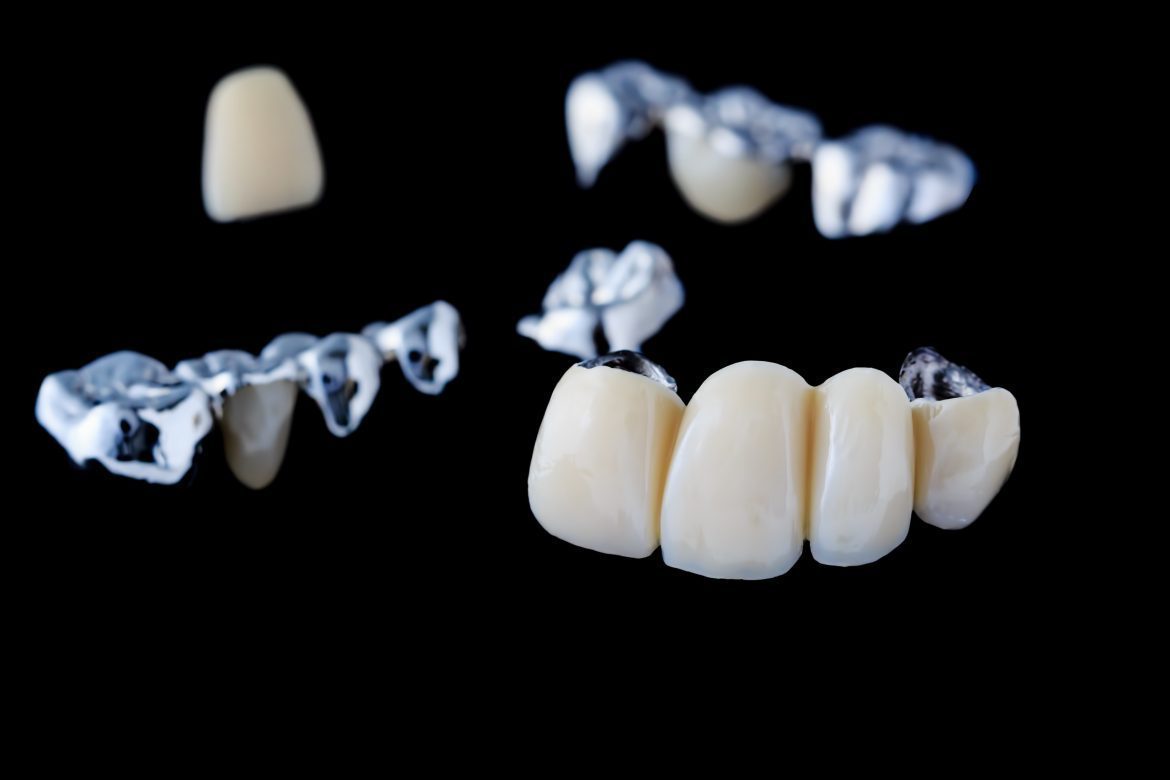
Dental bridges in Toronto replace missing teeth in your jaw by holding artificial teeth called pontics in position to fill the gaps left behind by missing teeth. Those artificial teeth are designed and coloured to match your remaining natural teeth. They also restore the ability to chew and speak naturally and prevent your remaining natural teeth from shifting or rotating into the gaps in your jaw.
There are four types of bridges. Which type of bridge is appropriate for you depends on how the bridge is intended to attach to your teeth or into your jaw, and on where the bridge will be located in your mouth. Each option has advantages and disadvantages that your dentist in Toronto will explain before recommending the best option for you.
What kinds of bridges are there?
Traditional bridges
This most common type of bridge supports artificial teeth using crowns bonded to natural teeth at both ends of the gap. They’re very strong but rely on the strength of the natural teeth on either side of the gap which, themselves, must be ground down in order to accommodate the crowns.
Cantilever bridges
Cantilever bridges are anchored via a crown at one end of the gap. This makes cantilever crowns appropriate for supporting replacement rear molars. However, the absence of a second anchoring tooth renders cantilever bridges weaker and less durable than bridges with two supporting teeth.
Maryland bridges
Maryland bridges support replacement teeth in a metal or porcelain frame that is attached to the rear of the teeth on either side of the gap in your jaw. They’re less invasive and require no alteration of your natural teeth. Although less invasive than crown-based bridges, they are weaker than crown-based options.
Implant-supported bridges
Implant-supported bridges are a particularly good solution for multi-teeth gaps. They are not connected to natural teeth via crowns, but are anchored to your jaw using dental implants rooted into the jawbone itself. That anchoring of the bridge into your jaw produces the most natural appearance and function. Implant-supported bridges are the strongest but most invasive option.
How are bridges provided?
The first step to obtaining dental bridges near you is a thorough assessment of the condition of your jaw, remaining teeth, and gums. Your dentist in Toronto will confirm whether you are a good candidate for a bridge, what type is appropriate, and whether there are any underlying conditions that need to be addressed first. Depending on what type of bridge is recommended, a dentist near you may take a set of dental images and may take a set of impressions to be used to design your crowns and replacement teeth.
If you have selected implant-supported images, the information gleaned during the assessment and from the images will be used to develop a treatment plan and to identify the precise location implants to support your bridge. Eventually, you’ll attend an appointment for a surgical procedure to insert titanium posts into your jaw to support your new dental bridge. You won’t receive your bridge immediately after the posts are inserted because your jaw and gums will need time to heal. Once the posts have bonded to your jaw completely and your gums have healed, you’ll be fit with abutments — mechanical grips — attach to your ultimate bridge and to hold it in place and fill the gap in your jaw permanently.
As you can tell from this very brief and necessarily incomplete introduction, dental bridges in Toronto are a very flexible option for permanently solving the loss of adjacent teeth. The process of being assessed and fit for your bridge will vary depending on your particular tooth loss, any underlying conditions, and what type of bridge you opt to receive. To understand all the options and implications of the wide range of choices, contact a dentist in Toronto for a complete assessment.
